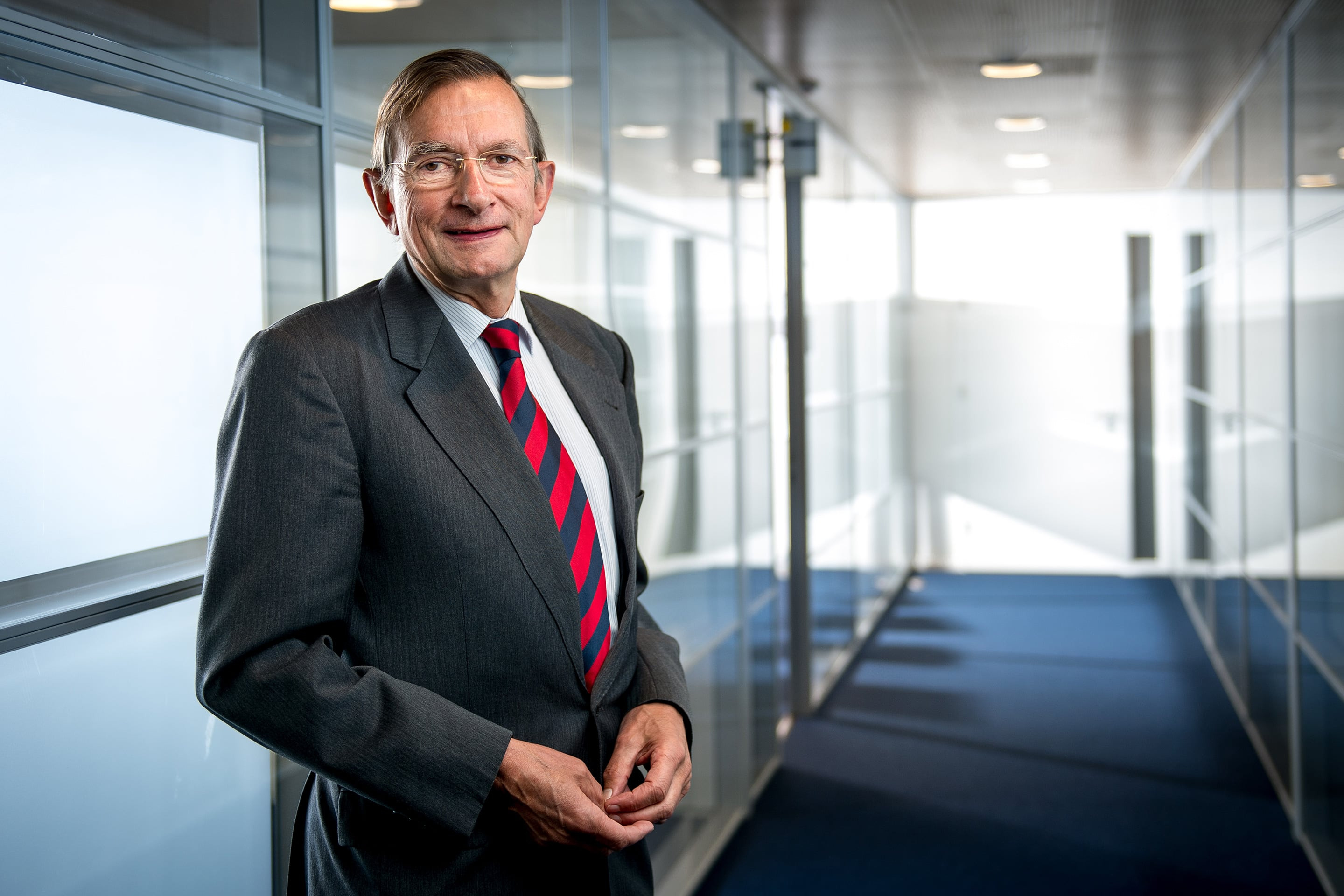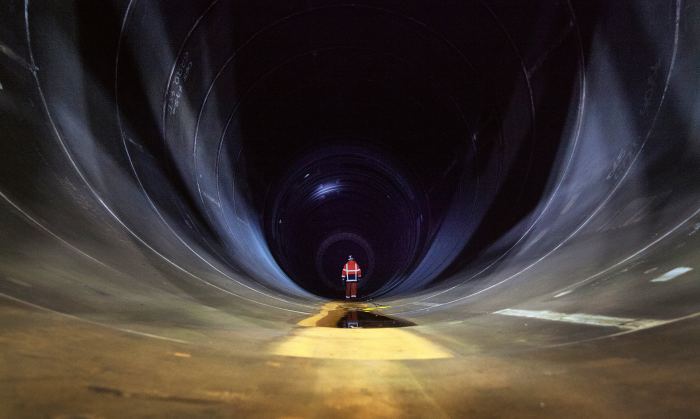Jeroen van der Veer, the former CEO of Shell, is now co-chairman of the World Economic Forum’s Global Forum Agenda for Energy. He has clear views about the transition to renewable energy supplies, the role that offshore technology can play and the opportunities that those developments will bring.
The 21st UN Climate Change Conference took place in Paris in December 2015, culminating in an international climate agreement. The world committed itself to reducing greenhouse gas emissions and limiting global warming to a maximum of 2 degrees Celsius.



What is your assessment of the UN Climate Change Conference in Paris?
“That conference was relatively successful. It was the first time that everyone agreed on the problem and committed themselves to resolving it. The playing field was staked out and every country is on board. Partly as a result, there is a greater awareness among the general public about what needs to be done, and that it will not be easy. In 2050, we will probably be consuming 80% more energy than today because of the growth of the global population and a larger middle class, even if we make major advances in energy efficiency. If we all carry on using fossil fuels, carbon emissions will increase dramatically. And we have already gone to the limit – or beyond – of what the climate can take, so that’s not a feasible option. That is why goals were agreed in Paris for an energy transition. We need to switch to a combination of renewable forms of energy, to make further progress in energy efficiency, and to think about our lifestyle and about climate mitigation, in other words steps we can take if the weather becomes more extreme.”
What do you see as the scenario for this transition?
“There are all kinds of scenarios. Greenpeace and some other NGOs think we can stop using fossil fuels nearly “tomorrow” and at the other side of the spectrum there are also scenarios in which we carry on burning large amounts of coal. There is still no consensus about the energy roadmap to 2050. At the World Economic Forum earlier this year, I was the vice-chairman for a group that included scientists and NGOs from all over the world. We studied the future of energy consumption in order to establish a shared perspective.”
The future of fossil fuels
Jeroen van der Veer sums up a few of the findings. “In 2050, we will be producing roughly the same amount of oil as we do today. But if energy consumption increases by 80%, the market share of oil in the world energy mix will fall sharply. In 2004, the overall share of oil was 40% and it is now about 31%. By 2050, it will be most likely less than 20%. The market share of natural gas is now just above 20%. That is expected to be about the same in 2050. In other words, gas consumption will increase. Not only will there be a lot more LNG (Liquefied Natural Gas), there will also be more pipelines to transport gas to where it is needed. A map shows that Europe is covered by a spaghetti of pipelines that I think will extend to the Middle East and East Asia in 40 years from now.”
“The share of coal continues to be shrouded in most uncertainty. We have to realize that the increase in coal burning in the past decade has more or less matched our increase in renewable energy output. Particularly in East Asia, coal production has increased dramatically. What does the future hold? There are three scenarios. The first involves capturing CO2 at the point of coal-based energy production and then storing it in depleted gas fields. That is known as CCS (Carbon Capture & Storage) and it deals with the main negative impact of coal. It is an expensive approach that also costs energy. But if you can manage the economics, this scenario may still involve using large amounts of coal, but it reduces the carbon footprint.
The second scenario involves imposing some form of carbon tax so that coal becomes expensive making natural gas or renewable energy become more appealing commercial options. In the third scenario, the world fails to get the other scenarios off the ground and we just carry on burning coal. That would be bad news. It means failing to meet the goals from Paris. The road to CO2 reduction from coal or coal reduction is rocky and paved with obstacles. I think we’ll make it in the end because people will understand that there’s no alternative. And countries like China really are working on programs to build fewer coal-fired power plants. India is growing rapidly and it faces a dilemma. The Indians have coal of their own and they don’t want to import everything.”
if we drive electric cars consuming electricity generated from coal, then we are fooling ourselves.
But didn’t China and India sign the Paris agreement as well?
“The agreement is to keep global warming below 2 degrees Celsius but it doesn’t say how much China should do. The great thing about Paris was that it wasn’t dictated from above: every country set out what they could manage to do in the long term. It’s an interesting psychological balance: if you do nothing, you will be seen as anti-social, and if you are too ambitious, your economy will grind to a halt. And it has to be admitted that, if you add up all the plans, global warming still exceeds 2 degrees. So some work is still needed to get on the right track.”
Renewable energy has to be cheaper
“Renewable energy is an essential factor. In the long run, solar panels will produce much more electricity. The use of solar panels in the past decade increased faster than we expected, and there are many more possibilities. I think governments could be stricter: new homes should have solar panels or otherwise pay extra local taxes. You have to run down subsidies and move towards regulation. Solar farms have already been built in the Middle East. In this region, they are expected to be a viable commercial proposition in the coming decade. An important issue is how to store the energy. The number of breakthroughs in terms of electricity storage has been disappointing so far. But technology will help over a period of 30 years. An enormous amount of research is being conducted around the world. As to wind energy, the options onshore are limited but offshore wind is very promising. The problem with offshore wind is that it is still too expensive. We can’t continue to pump enormous state subsidies into wind farm construction as we have been doing in Europe: that is not sustainable in the long term. The trick is to achieve major cost reductions: we will be a few offshore-wind generations down the line before that happens. But I think you can achieve a lot with cumulative construction and technological development.”
Does nuclear power have a role to play?
“Nuclear power is the great unknown. You could build thorium-based reactors to eliminate the waste problem. But I’m not sure whether they will be a commercial proposition in time. You have to think about reactors that produce less waste or no waste all. But there is still a problem: almost no one wants to have a nuclear power plant in their back yard.”
Is the business world ready for the energy transition?
“Change means opportunities for new technology and that is exactly what the energy sector needs now. For people who want to be pioneers, the energy transition is one big job creator. It’s about integrating technologies, IT and smart systems. That’s good news if you’re young. Take the maintenance of wind turbines at sea, for example.”
So oil is losing market share, gas production will remain roughly constant, coal is an uncertain factor in the longer term, solar energy will become more important, and the prospects for offshore wind energy are promising. What else can we do?
“You can also look at how we consume energy. Transport – mainly cars and planes – accounts for 20 to 25% of energy consumption. Electric cars are certainly an option in cities, but gas or relatively clean diesel will continue to be used for long distances and in trucks. If you drive 50 kilometers per liter and 10,000 kilometers per year, you only have to fill your tank once every three months. That’s a major reduction in the car’s environmental footprint.”
More than one egg in the basket
“Governments should be cautious about opting for just one type of technology. If a country says that all cars have to be electric by 2025, that puts a brake on the development of extremely economical diesel engines, which could actually have a smaller footprint than electric cars in the long term. And electric cars don’t provide governments with income from fuel excise duty. That runs into billions and that money has to come from somewhere. What governments can do is legislate a limit on carbon emissions per kilometer from cars. If we drive electric cars consuming electricity generated from coal, then we are fooling ourselves. And the range of electric cars is still quite small. Long-distance transport will still depend on hydrocarbons. Engines will be much more economical and produce less carbon than they do now. We have to keep all our options open.”
Change means opportunities for new technology and that is exactly what the energy sector needs now.
Are you enthusiastic about any other developments?
“Trucks that can run on LNG. Ships on the Great Lakes in America are already using LNG. It’s not entirely fossil-free but it is a huge environmental improvement. Europe is not there yet but the technology is available for shipping to use LNG on a large scale. We can also move to low-sulfur diesel or use biofuel for our shipping. The Boskalis biofuels pilot project with GoodFuels is an excellent first step in that direction. I can’t predict what the situation will be in 2050, but I do know that fuel consumption will be reduced per nautical mile. On the chemical side, there are three interesting developments: co-firing biomass, pure biofuel and biochemistry. Co-firing is already a reality. Ethanol is already being used in Brazil. The chemical industry still has to make the switch to biochemistry. I think that’s going to happen. Plastic from biochemical technology is not exactly the same as ordinary plastic, but you have to look at functionality.”
Is tidal energy still interesting?
“At the World Economic Forum, we looked at energy from water flows, in the Scheldt river for example. We still don’t know whether this approach can be commercially viable on a large scale but it is still not making major progress in terms of the percentage of global energy consumption. So we need a breakthrough.”
What are the long-term winners?
“Solar and natural gas. The bronze medal is probably for offshore wind, with energy savings in fourth place.”
What are the implications of the energy transition for oil and gas companies?
“Increasingly, gas has to be transported. Take the Netherlands, for example: the country itself used its own domestic gas from Groningen. But that field will probably be more or less depleted by 2050. Even so, the Netherlands will still be using gas then and so the gas will have to be brought in. So gas is a growth industry with increasing transport challenges. Oil consumption in 2050 will be of the same order of magnitude as today, and there will be a shift from onshore to offshore or to shale oil, which is difficult to produce. By that time, production will require higher levels of investment per barrel. That’s not just a question of more money per barrel but also of more grey cells per barrel.”
Are there also opportunities for the oil and gas companies?
“There are two schools. The first says: ‘We are an oil and gas company. When there is no more oil and gas, it’s mission completed’. The second school thinks oil and gas will never run out, but new forms of energy will come. That involves a technology shift.”
Focusing research
“The big winner is renewable energy when it becomes commercially more viable. Oil and gas companies can invest in this market. They have to be making decisions about solar, wind or natural gas now. If they wait until 2050, they will miss the boat. Personally, I favor a combination: we should be putting our money on new forms of oil and gas production and make sensible decisions about renewable energy. As a large company, you don’t want to be dependent on subsidies for ever. You have to see the commercial way forward: developments in technology allow you to make alternatives profitable. That’s where we should be focusing research.”
You are the chairman of the Dutch Science and Technology Platform, which encourages people to study technology. What’s happening there?
“People sometimes wonder whether they should still study offshore engineering for example. In the long term, the share of oil in the energy mix will decline but more of the oil will come from offshore locations. Offshore is in the ascendancy and onshore is falling off. Wind is also offshore technology and so that continues to be enormously relevant. In the long term, four out of ten people in Northwest Europe should be studying technology or computer-related disciplines. Or at least a STEM study: Science, Technology, Engineering and Mathematics. Three out of ten jobs will depend on this sector. Four out of ten students should be studying these fields because there are more technical students who end up being for instance copywriters than copywriters who design bridges. The Netherlands has been lagging a long way behind the rest of Europe in terms of STEM students at universities but we are certainly catching up.”
What do you see as the time horizon for the most important changes?
“The horizon adopted in Paris was 2050: that’s not too far away but a lot could happen in the meantime. In 1980, we certainly did not predict a lot of things that are now day-to-day realities. And the future doesn’t stop in 2050. It is possible that, by that time, we will be wondering how we could be so stupid in 2015 when we adopted these targets. But that is the best we can do for now. There is always a new horizon; that’s what keeps it exciting.”
